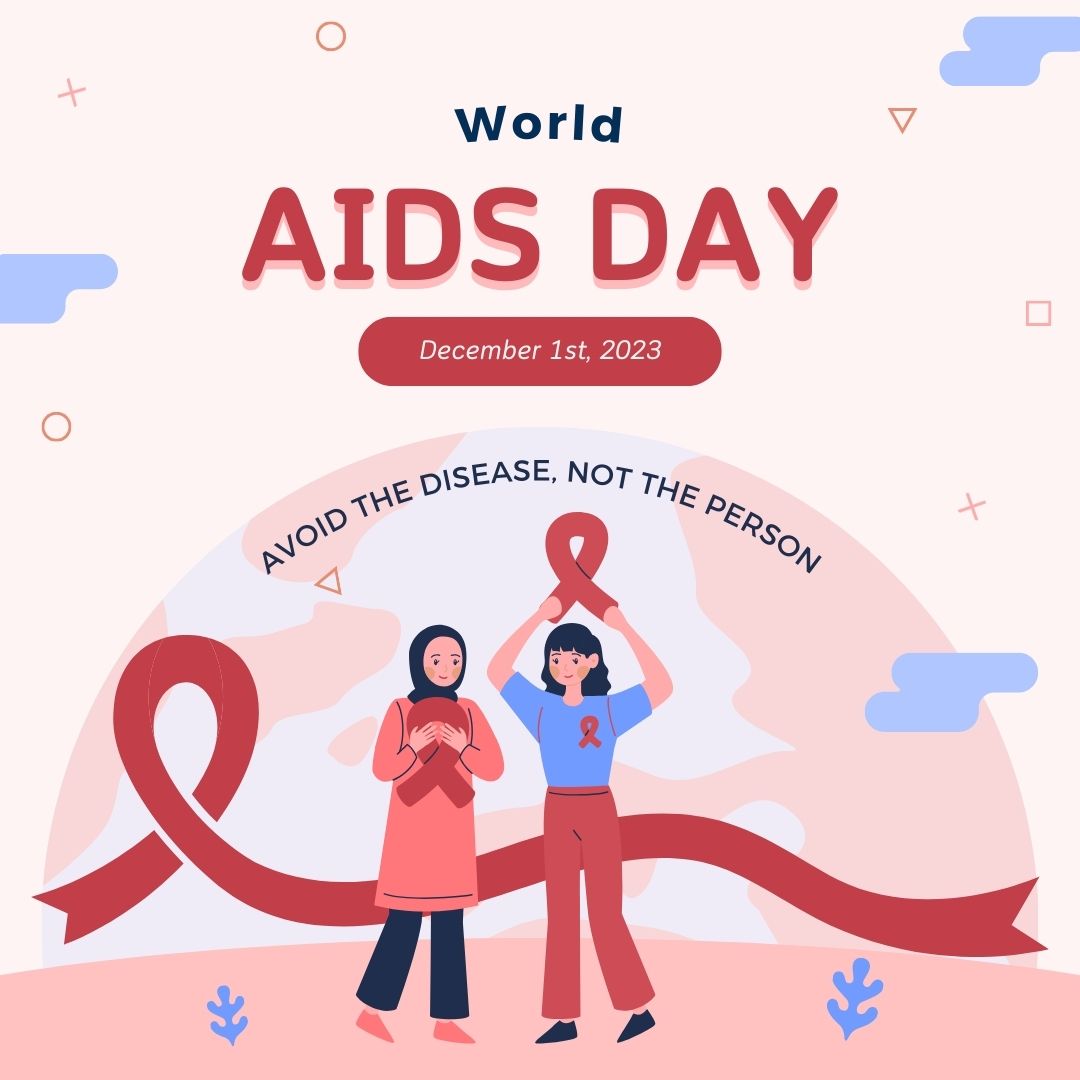Each year on December 1st, the world comes together to observe World AIDS Day—a day dedicated to raising awareness about HIV/AIDS, commemorating those who have lost their lives to the disease, and showing support for those living with HIV. This global initiative serves as a reminder of the ongoing fight against HIV/AIDS and encourages solidarity in addressing the challenges faced by individuals and communities affected by this condition.
Understanding HIV/AIDS
HIV (Human Immunodeficiency Virus) attacks the body’s immune system, weakening its ability to fight infections and diseases. If left untreated, HIV can progress to AIDS (Acquired Immunodeficiency Syndrome), the most advanced stage of HIV infection. While significant strides have been made in understanding and treating HIV/AIDS, there is still no cure. However, early diagnosis and proper medical care can help manage the condition and enable individuals to lead fulfilling lives.
The Importance of Awareness
One of the primary goals of World AIDS Day is to foster greater awareness and understanding of HIV/AIDS. Education plays a pivotal role in prevention, encouraging individuals to practice safe behaviors, get tested regularly, and access appropriate healthcare services. Through knowledge dissemination, stigma and discrimination associated with HIV/AIDS can be reduced, creating an environment of empathy, support, and inclusivity for those affected by the virus.
Global Efforts and Progress
Over the years, significant progress has been made in combating HIV/AIDS through research, medical advancements, and community initiatives. Access to antiretroviral therapy (ART) has transformed the landscape of HIV treatment. Consequently, it has improved the quality of life for many individuals living with the virus. Furthermore, advocacy efforts and increased awareness have contributed to a decline in new HIV infections in various parts of the world.
Challenges and Continuing the Fight
Despite the progress made, challenges persist. Stigma remains a barrier to testing and treatment, preventing many individuals from seeking the necessary care. Access to healthcare services, particularly in marginalized communities and developing countries, remains a concern. Additionally, there is an ongoing need for continued research, funding, and global collaboration to find a cure and ensure equitable access to treatment for all.
Taking Action
World AIDS Day serves as a call to action for individuals, communities, governments, and organizations to unite in the fight against HIV/AIDS. Moreover, there are numerous ways to get involved. For instance, organizing educational events and fundraisers, or alternatively, volunteering at local HIV/AIDS organizations. Supporting initiatives that promote awareness, firstly, provide resources, and secondly, advocate for policy changes can make a meaningful difference in the lives of those affected by HIV/AIDS.
Conclusion
As we commemorate World AIDS Day, let us stand in solidarity with those affected by HIV/AIDS, honor the memories of those we have lost, and reaffirm our commitment to ending the epidemic. By fostering awareness, firstly, combating stigma, and secondly, supporting advancements in research and treatment, we can move closer to a world where HIV/AIDS no longer poses a threat to individuals and communities worldwide.
Remember, knowledge, compassion, and unity are powerful tools in the global fight against HIV/AIDS. Let’s continue to spread awareness, support one another, and work towards a future free from the impact of this disease.
FAQs
Q: What is World AIDS Day?
A: World AIDS Day, observed globally on December 1st each year, dedicates itself to raising awareness about HIV/AIDS, supporting those living with the virus, commemorating those who have passed away due to AIDS-related illnesses, and highlighting the importance of HIV prevention and treatment.
Q: What is HIV/AIDS?
A: HIV (Human Immunodeficiency Virus) is a virus that attacks the body’s immune system, making it vulnerable to infections and diseases. AIDS (Acquired Immunodeficiency Syndrome) occurs in the advanced stage of HIV infection when the immune system sustains severe damage. HIV can lead to AIDS if left untreated.
Q: How is HIV transmitted?
A: HIV can be transmitted through unprotected sexual intercourse, sharing needles or syringes, and from an infected mother to her child during pregnancy, childbirth, or breastfeeding. It does not transmit through casual contact such as hugging, shaking hands, or sharing utensils.
Q: Is there a cure for HIV/AIDS?
A: Currently, there is no cure for HIV/AIDS. However, with early diagnosis and proper medical care, individuals living with HIV can manage the virus and live long, healthy lives. Antiretroviral therapy (ART) is a treatment that helps control the virus and prevent its progression to AIDS.
Q: How can I support World AIDS Day?
A: There are several ways to show support. First, participate in awareness events. Additionally, educate others about HIV/AIDS. Moreover, get tested for HIV. Furthermore, donate to HIV/AIDS organizations. Besides, volunteer at local clinics or support groups. Lastly, advocate for policies that promote HIV prevention, treatment, and support services.
Q: Why is raising awareness important?
A: Raising awareness is crucial to combat stigma and discrimination associated with HIV/AIDS. It encourages individuals to seek testing, access treatment, and adopt preventive measures. Awareness also fosters a supportive environment for those living with HIV/AIDS.
Q: What are some common misconceptions about HIV/AIDS?
A: People hold various misconceptions, such as believing HIV can transmit through casual contact or that a person with HIV will always look sick. These misconceptions contribute to stigma and hinder efforts to promote accurate information and support for affected individuals.
Q: How can I protect myself from HIV?
A: To prevent transmission, practice safe sex by using condoms, avoiding sharing needles or syringes, getting regular tests, and seeking medical care if exposed to HIV. Additionally, pre-exposure prophylaxis (PrEP) is available for individuals at higher risk of acquiring HIV.








